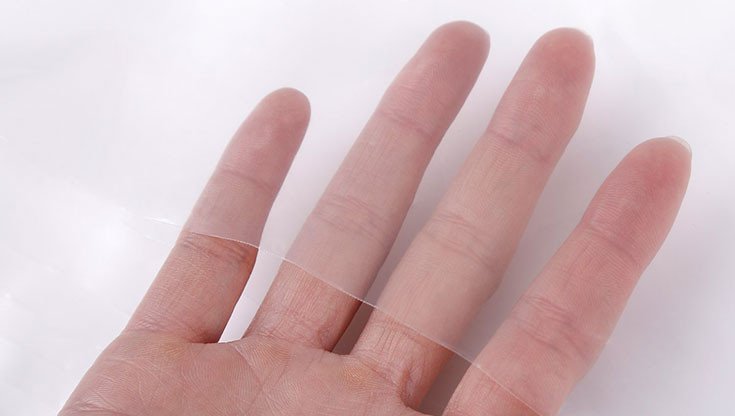One of the biggest pains of moving is transporting a mattress.
They are big, bulky, and require two people to move. They take up a ton of room in a moving van, and if you’ve only got a car, then you’re probably wracking your brain trying to figure out the best way to strap that sucker onto the roof.
But, wait a second.
If you have a memory foam bed, if you may remember that it came in a fairly compact box. Surely there must be a way to compress the bed back down to a size similar to the factory’s package.
The bad news is that those factories have giant machines that exert tons of force onto the mattress to fold it into the nice, little bundle that gets delivered to your doorstep. The good news is that there’s a relatively easy and inexpensive way to compress a memory foam mattress DIY-style, so you can move to a new house without having to bribe your friends with bottomless pitchers of margaritas.
What You Need
Plastic Mattress Bag
The first thing to do is wrap it in a plastic bag. There are types explicitly made for beds, and they’re surprisingly inexpensive. Get a heavy-duty and recyclable plastic, and if it’s available, opt for one that has a seal. It’ll make the process go a lot smoother.
Another thing to watch out for is size. If you’ve got a queen bed, for example, make sure you get a queen-size bag; not a king. Otherwise, you’ll have to deal with extra plastic. It’s not a deal breaker; just an extra layer of complexity.
Ratchet Straps
Also called tie-down straps, ratchet straps will help secure it once it’s rolled up. Again, they’re inexpensive, and these will help you have something to grab onto when you’re moving it. They’re also kind of like an insurance policy. If your tape and vacuum seal job doesn’t hold up, the ratchet straps will hold everything in place for you.
Duct Tape
Duct tape has a ton of uses and wrapping up beds is a new one you may not have considered. When buying the right type to compress a mattress that’s made out of memory foam, choose one that’s sticky, but not the stickiest. It has to be high-quality enough to hold, but you don’t want it to be so heavy duty that it’s impossible to unwrap without damaging the plastic.
Vacuum Bag
You don’t need a giant industrial vacuum bag for this to work. You can get a smaller one and then attach the valve to the plastic mattress bag.
Steps – Deflating Your Memory Foam Mattress
Remove the Bedding
Now comes the fun of deflating your bed!
The first thing is to take off all the sheets, mattress protectors, etc. The bed should be completely bare.
Put the Mattress in the Bag
If you got the right size bag, the mattress should slide in smooth and snug, almost like a card fitting inside an envelope.
Seal it Up
You’ll be happy if you opted for the sealable bag because the parcel will be much easier to work with. In this step, make sure the bed is secured inside, and it’s tightly sealed. Even with the sealable bag, you should still double or triple reinforce the edges with duct tape.
You’ll also want to tape the valve from the vacuum bag on to the regular plastic. Then cut a hole through the plastic to bring the valve through so it reaches the surface of the bed. Tape the hole as securely as possible, so that when you vacuum it’s airtight enough to suck out all the air.
As you shop for the vacuum bag, make sure that the diameter of the valve matches the width of your hose. Otherwise, this step will be wasted.
Vacuum the Air Out
Attach your vacuum hose to the valve, turn on the vacuum and watch the process begin to work! Slowly, all the air will be sucked out, and then after that, you’ll see the mattress compress to a fraction of its original height.
Roll it Up
Once you’ve flattened the bed out as much as it will go, keep it horizontal and begin the rolling process. We recommend keeping the vacuum running as you roll to make sure no air makes its way inside.
Strap It
Use your ratchet straps to secure the mattress. If the plastic holding everything together rips or breaks, these straps will keep your bed rolled and compressed.
Other Helpful Compression Tips
Get the Right Size Mattress Bag
Something that’s too small won’t allow your bed to fit. And while you might think it’s safer to size up to ensure a fit, you’ll likely end up with excess material that makes the process needlessly more difficult.
Placing it Inside the Vehicle
Make sure you keep the rolled bundle horizontal and don’t stand it up tall. This could potentially harm the material, which will also void the warranty.
Once everything is rolled up, it’s a straightforward process to get into the car. An SUV or truck bed will make things easier, but even if you have a small car, you’ll still be able to transport the bed if you can fold down the back seat.
If you’ve got a long trip from the bedroom to your vehicle, this may require two people. Alternatively, consider rolling it carefully along the ground.
And, now that you know how to move a mattress, you can help your friends when it’s time for them to move without having to do any heavy lifting.
Try a Sealable Bag
A sealable bag is not a requirement, but it is definitely helpful. It’ll be easier to handle and seal than a bag that has no closure. Also, sealable versions tend to be higher quality with thicker plastic, which is also a plus.
Use More Ratchet Straps
Grab a few of these to secure your bundle. One in the middle and one on either side. Again, if the plastic breaks these will make sure the bed doesn’t expand to the full size. The ratchet straps are also helpful to have something to grab or hold on to when you’re transporting the bed.
Conclusion
The next time you’re considering throwing away a mattress because you don’t want the hassle of moving it, check first to see if you have a memory foam bed. They’re surprisingly easy to roll up and transport with a few readily available and inexpensive tools.
And, if you’ve just had the pleasure of moving an innerspring bed, you may want to consider buying memory foam mattress the next time around!

Olivera Jancikin
Content Writer
About Author
Olivera is a content writer for Sleep Advisor and is enthusiastic about sleep. She firmly believes in the benefits of daytime naps on top of getting a full 8-hour sleep at night.
Combination Sleeper


